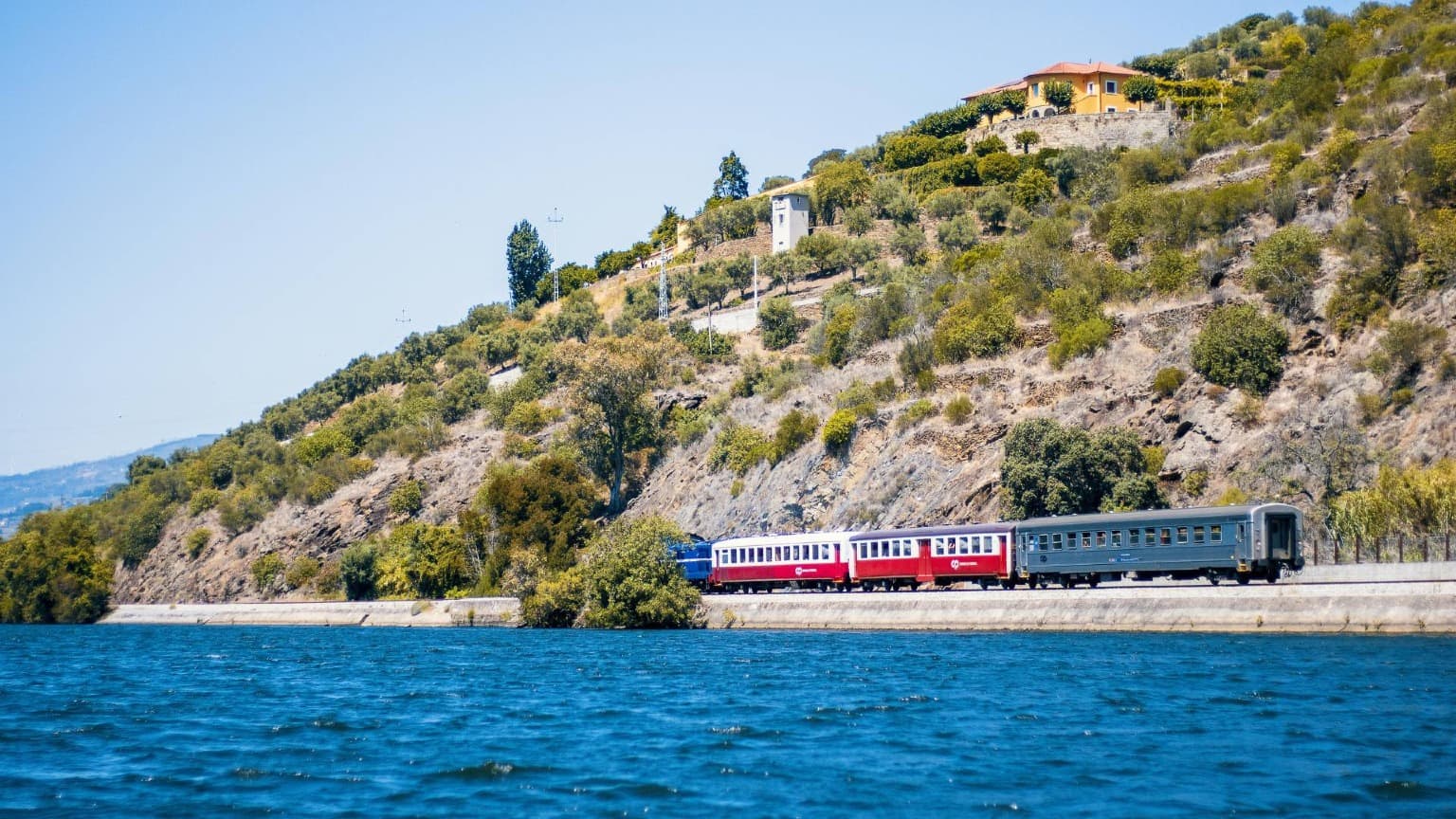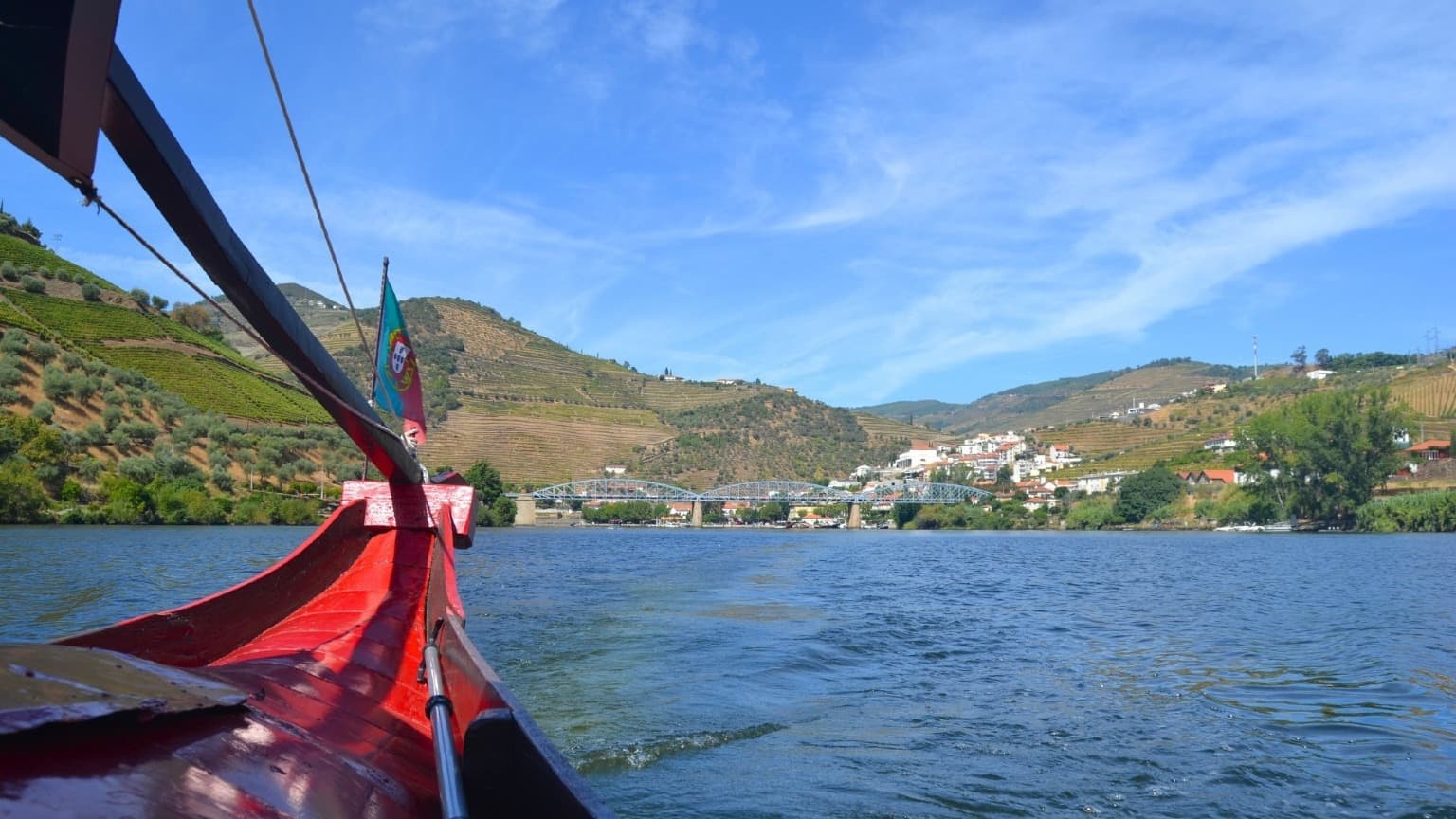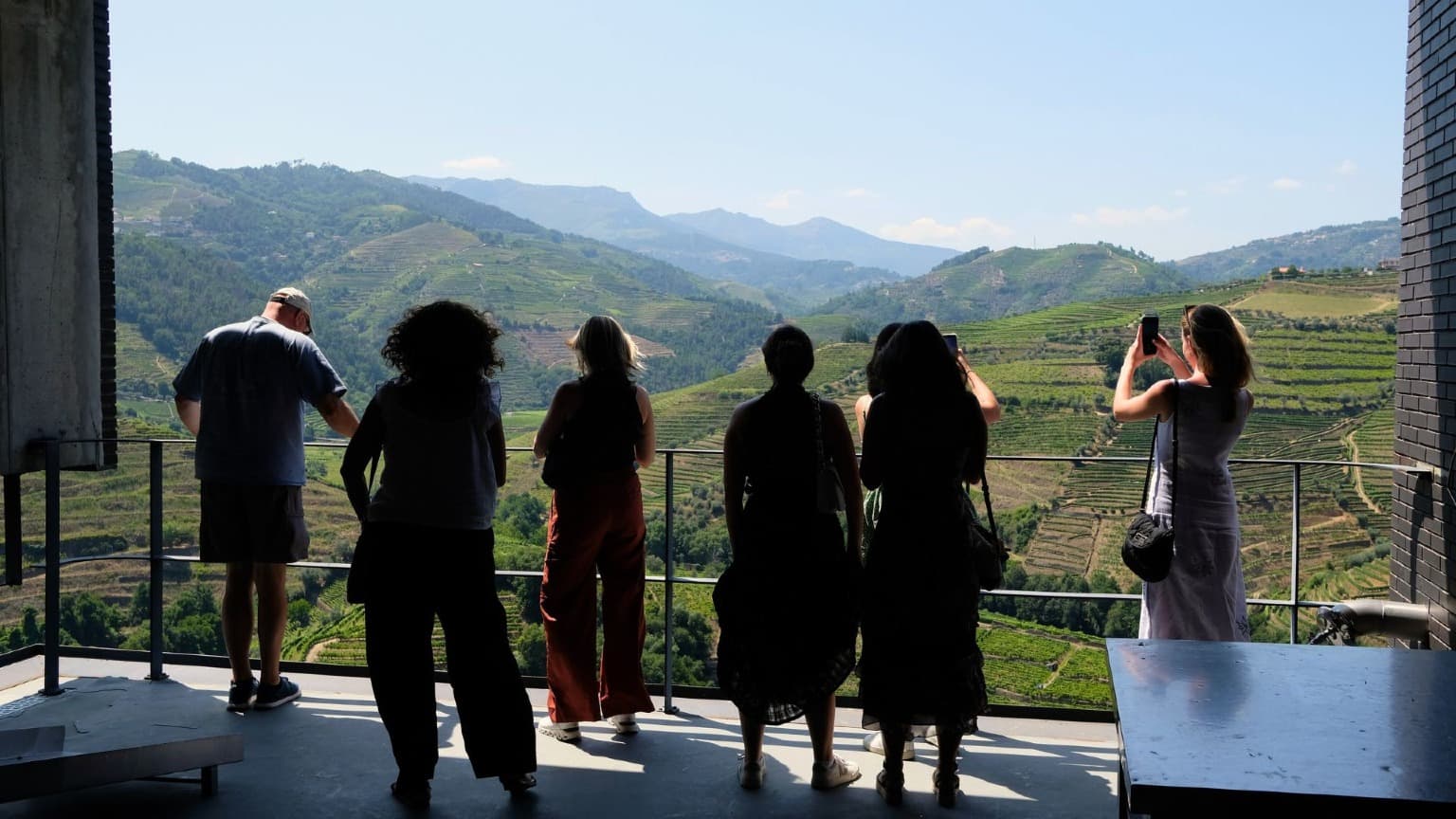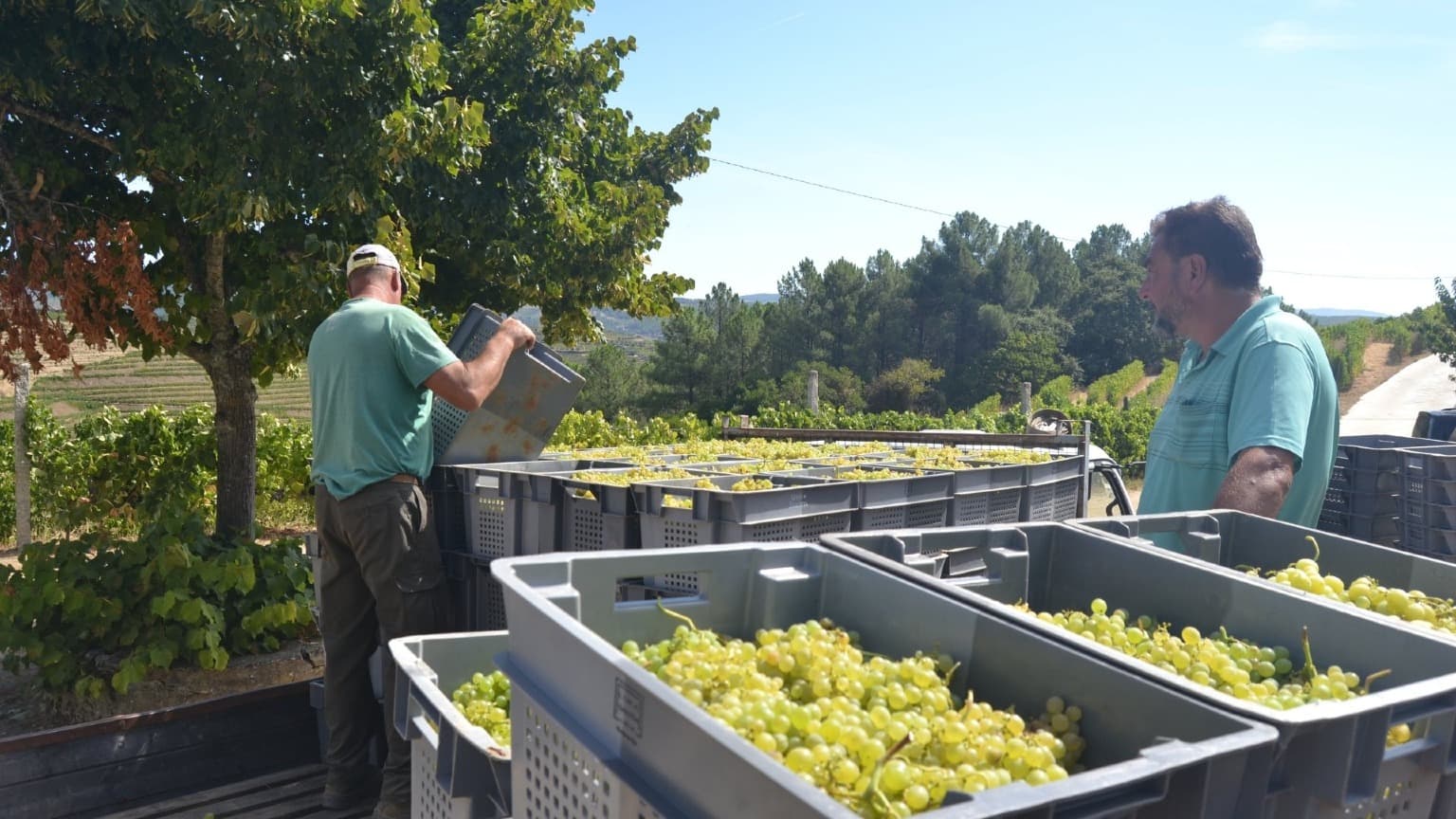Douro Valley from Porto: Which Is Better – Guided Tour or Train?
August 14, 2025
The Douro Valley, located just a couple of hours from Porto, is one of the most picturesque wine regions in the world. With its UNESCO-listed terraced vineyards, charming riverside towns like Peso da Régua and Pinhão, and the winding Douro River, it’s no wonder this region has become a must-visit destination in Portugal.
Steeped in history, the Douro is the oldest demarcated wine region in the world (established in 1756) and is famed for producing Port wine as well as exceptional reds and whites. But when planning your visit, a common question arises:
Should you explore the Douro Valley on a guided tour or go solo by train?
In this guide, we’ll compare the two options, highlighting real advantages and drawbacks so you can choose the experience that matches your travel style.
Train to Douro Valley – Freedom and Views, But With Limits
Traveling by train from Porto’s São Bento or Campanhã station to Pinhão or Peso da Régua is a favorite choice for independent travelers and train enthusiasts. The Linha do Douro is often hailed as one of Europe’s most scenic rail journeys, running along the riverbanks past quaint villages and sunlit vineyards.

The scenic Linha do Douro train journey between Peso da Régua and Pinhão, running alongside the river.
✅ Advantages of Going by Train
• Low Ticket Cost – Around €11–€14 one way from Porto to Pinhão (2025 prices).
• Breathtaking Scenery – Especially between Peso da Régua and Pinhão, where the train runs right beside the river.
• Flexible Schedule – Multiple departures daily allow you to choose your pace.
• Sustainable Transport – Traveling by train reduces your carbon footprint compared to renting a car.
💡 Tip: Sit on the right side of the train when heading east for the best views.
❌ Drawbacks of the Train Option
• Limited Winery Access – Without a car, you’re restricted to wineries within walking distance of train stations, such as Quinta do Bomfim and Quinta das Carvalhas. These are beautiful but often busier and more commercial.
• Extra Costs – Meals, wine tastings, and taxis to reach more remote estates (like Quinta do Seixo) can quickly raise your total spend.
• Longer Travel Time – Porto to Pinhão takes about 2h30 each way, meaning you’ll spend more time in transit compared to a small-group tour.
• Planning Stress – You’ll need to book winery visits in advance, coordinate train times, and make sure you have enough time for lunch and activities.
🚶♂️ Eco-Tips for Train Travelers
If you decide on the train, you can still enjoy authentic and sustainable Douro Valley experiences. Cooltour Oporto partners with trusted local providers for hiking routes through vineyard trails, solar-powered boat tours in Pinhão, and guided tastings with small wine producers — all designed to keep your trip eco-friendly.

A traditional rabelo boat cruising on the Douro River, with views of Pinhão’s vineyards and historic bridge.
Guided Douro Valley Tours – Comfort, Authenticity & Expert Insight
If you’re looking for a seamless, all-inclusive experience, a guided Douro Valley wine tour from Porto is hard to beat. You can simply relax and focus on what matters most: tasting incredible wines, meeting local people, enjoying local cuisine, and soaking in breathtaking views from famous miradouros (viewpoints).

A Cooltour Oporto small-group tour enjoying panoramic views of the Douro Valley from a family-owned winery.
✅ Why Choose a Guided Tour?
• Hassle-Free Planning – Transport, authentic winery visits, river cruise, and meals are all included and well planned.
• Local Expertise – Guides share stories about the valley’s history, grape varieties, and winemaking traditions that you’d miss on your own.
• Authentic Wine Tastings – Meet the people behind the wines and access family-owned quintas far from the tourist trail.
• Traditional Meal Included – Savor regional specialties like posta mirandesa, bacalhau à Brás, or trutas de escabeche served with local wines.
• Eco-Friendly Tours – At Cooltour Oporto, we are committed to sustainable practices — see all our initiatives at cooltouroporto.com/sustainability.
🆚 Douro Valley by Train vs. Guided Tour – Quick Comparison
Douro Valley by Train:
• Cost: Low upfront, but extras add up
• Flexibility: High (DIY itinerary)
• Winery Access: Limited to train-adjacent quintas
• Comfort: Standard train carriage
• Local Insight: Self-guided, limited information
• Sustainability: Public transport, but depends on further planning
• Effort Required: High (plan & navigate)
Douro Valley by Guided Tour with Cooltour Oporto:
• Cost: All-inclusive pricing
• Flexibility: Medium (set route, no planning stress)
• Winery Access: Exclusive & authentic estates
• Comfort: Premium travel in a comfortable van
• Local Insight: Expert commentary & insider tips
• Sustainability: Green initiatives and support for small producers
• Effort Required: Low (everything handled for you)
🧭 Prices and Best Value – By Train or Guided Tour?
As demonstrated in the video Douro Valley: Top Guided Tour vs Train Solo by Go Travel Planet, traveling by train can even be more expensive than joining a guided tour.
Using 2025 prices as an example:
• Train tickets: about €25 per person
• Two standard visits and tastings at Quinta do Bomfim and Quinta das Carvalhas: around €75
• Complete traditional meal: minimum €35
• One-hour Douro river cruise: €15
Total: easily reaches a minimum of €150 per person.
Conclusion and best value:
By comparison, small-group guided tours from Porto to the Douro Valley are all-inclusive and typically range from €130 to €170 — covering transportation, guided winery visits, a traditional lunch, and often a scenic river cruise. In other words, guided tours deliver more for less.
Why is a Guided Tour the best value?
Beyond the convenience and savings, you’ll enjoy local stories and historical insights from your guide, visit family-owned wineries, and see the Douro from multiple perspectives — something the train can’t match. While the train offers a beautiful stretch of scenery, a guided tour also takes you along the famous N222 road, considered one of the most scenic drives in the world. Plus, with a comfortable minivan, you can relax while supporting a local operator committed to sustainable tourism practices.
🧭 Hybrid Options – The Best of Both Worlds
Want the scenic train ride but also the local expertise of a guide? Some hybrid tours combine them. For example:
• Vineyard hikes with a local guide in Pinhão after arriving by train.
• Solar-powered boat tours combined with tastings at small quintas.
These allow you to enjoy the train journey but still get insider access to hidden gems.
🍇 Best Time to Visit the Douro Valley
• Spring (March–May) – Mild weather, blooming almond and cherry trees, perfect for hiking.
• Summer (June–August) – Golden sunsets and lively riverside cafés, but hotter midday temperatures.
• Harvest (September–October) – Grape picking, wine festivals, and the unmistakable scent of fermentation in the air.
• Winter (November–February) – Quiet charm, intimate tastings, and misty river mornings.

Harvest season in the Douro Valley, where local workers handpick grapes for the region’s world-famous wines.
❓ Douro Valley FAQs – Everything You Need to Know
Q: How long is the train from Porto to Pinhão?
A: About 2h30 each way, with the most scenic views after Peso da Régua.
Q: How do I get from Porto to the Douro Valley by train?
A: Trains depart from São Bento or Campanhã station to Peso da Régua and Pinhão several times daily. Tickets can be purchased online or at the station.
Q: How far is the Douro Valley from Porto?
A: By road, the Douro Valley starts about 1h15 from Porto, but the heart of the wine country around Pinhão is about 1.5 hours by car and 2.5 hours by train.
Q: What is the best way to visit the Douro Valley from Porto?
A: For most visitors, a small-group guided wine tour offers the best value and convenience. You can also go by train for a scenic journey, but it requires more planning and extra transport to reach wineries.
Q: Can I visit wineries without a car?
A: Yes, but you’ll be limited to those near train stations — and many of the most authentic estates are far from the tracks.
Q: Do I need to book Douro Valley wineries in advance?
A: Yes — especially in high season (May–October) and during the harvest period.
Q: What’s the weather like in the Douro Valley?
A: Summers are hot and dry, often exceeding 35°C, while winters are mild and occasionally rainy. Spring and autumn are ideal for pleasant temperatures and beautiful landscapes.
Q: Is the Douro Valley worth visiting in winter?
A: Absolutely. The valley’s quiet charm and intimate wine experiences make it magical year-round.
💡 Final Thoughts – Which Should You Choose?
• Choose the train if you love independent travel, have time to plan, and want the freedom to wander.
• Choose a guided tour if you value comfort, insider knowledge, and a fully curated wine & food experience.
Either way, the Douro Valley will leave you captivated by its beauty, history, and flavors.
🔗 Book Your Authentic Douro Experience
At Cooltour Oporto, we specialize in small-group, private, customized, and sustainable tours that bring you closer to the heart of the Douro and its essence:
• Expert guides and maximum comfort
• Family-run wineries and traditional lunch
• Scenic boat rides and vineyard walks
• Efficient itineraries and eco-conscious travel
➡️ From Cooltour Oporto to our trusted local partners: See all our Douro Valley tours